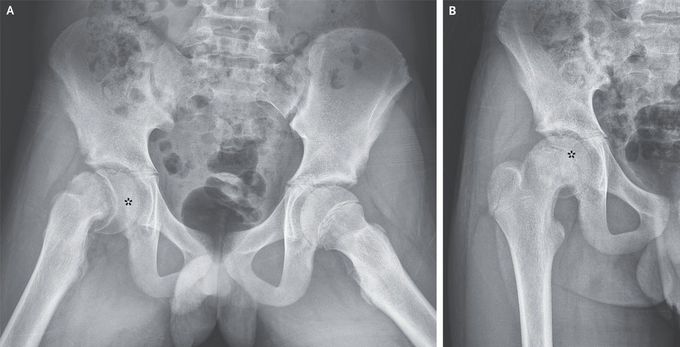


Slipped Capital Femoral Epiphysis
A 12-year-old boy with a history of obesity presented to the orthopedics clinic with a 2-week history of limping and dull pain in the right hip. The symptoms had begun after he had slipped and fallen at school. On physical examination, the patient’s body-mass index was above the 95th percentile for his age. Active and passive ranges of motion of the right hip were limited by pain. Radiographs of the pelvis showed posterior displacement of the right femoral epiphysis, which has been described as resembling a scoop of ice cream slipping off a cone (Panel A, asterisk; frog-leg lateral view), and blurring of the right metaphyseal growth-plate junction (Panel B, asterisk; anteroposterior view). A diagnosis of slipped capital femoral epiphysis was made. This condition is the most common hip disorder in teens. It occurs when the proximal femur displaces anterolaterally and superiorly, which gives the appearance of posterior and inferior displacement of the epiphysis. The condition is associated with obesity but not typically with preceding trauma, as occurred in this case. In situ fixation of the right hip was performed. At a 9-month follow-up visit, the patient’s symptoms had resolved. A repeat radiograph of the pelvis showed union of the right hip without slippage on the contralateral side.

